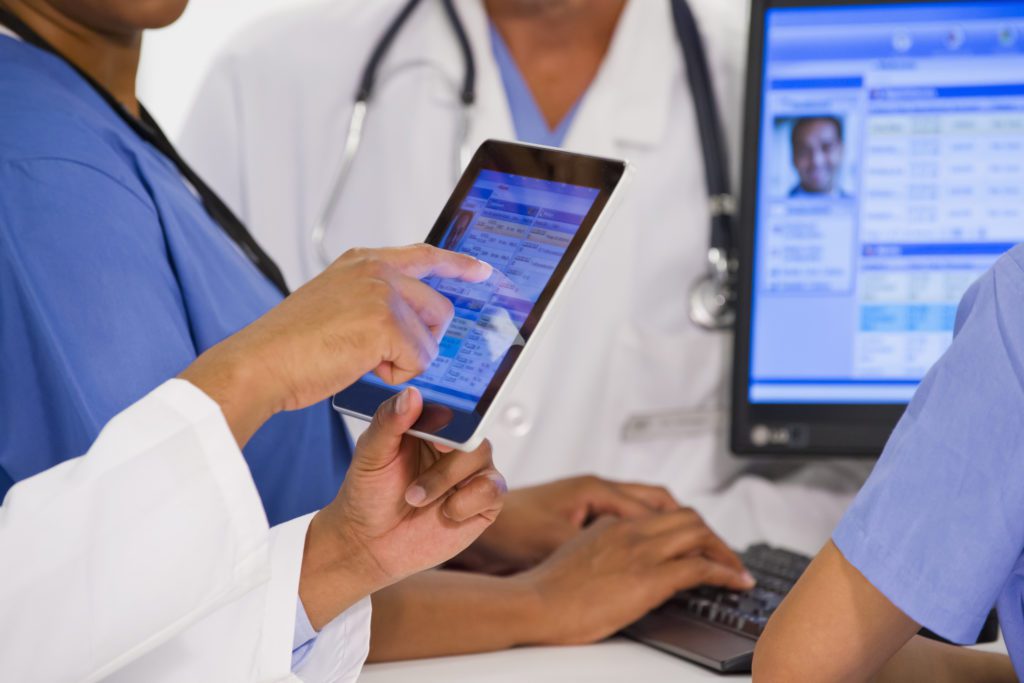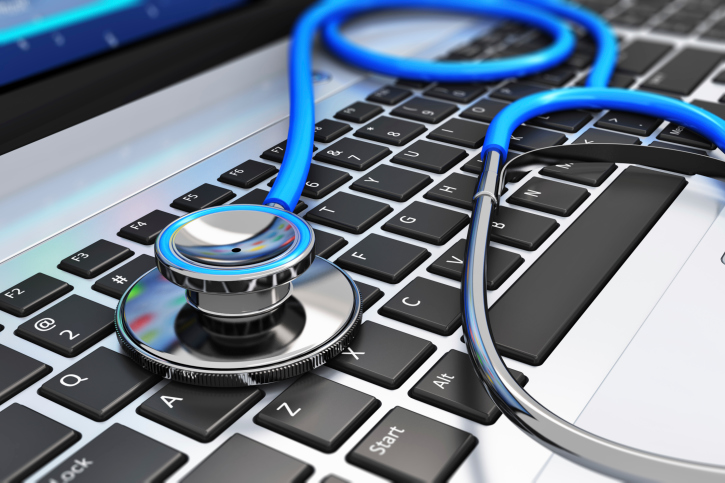Current and emerging technologies change how hospitals, clinics, and medical practices deliver care. Yet, healthcare organizations face workforce and security challenges. Ones that must be met while also appeasing the growing demands from patients. Although pay increases and recruitment investments help, it’s not enough to stave off immediate and future problems.
Digital health technology presents an opportunity for executives to improve care levels and efficiency, simultaneously improving experiences and lowering costs. Consider the role of technology in healthcare and learn how your organization can lead by example.
The Role of Technology in Healthcare
According to Deloitte, 92% of survey respondents consider better patient experiences the “top desired outcome from digital transformation.” Improvements stem from how technology connects patients to their data and healthcare providers. It plays a key role in shifting from disease treatment to health management. Technology also works to alleviate operational inefficiencies and deliver actionable insights.
Leaders adopt emerging technologies to support short and long-term cost reduction and error prevention goals. Although the role of technology may differ by application, ultimately, it improves patient care and overall efficiency.
Empower Connected Patients
Informed patients demand a seat at the table, and connected health models ensure they get one. Technologies, including cloud computing, artificial intelligence (AI), and automation, encourage participation in treatment decisions. Patients interact from mobile phones, in-room tablets or smart displays, and online portals.
Medtech and connected applications drive value-based care initiatives and consist of many technologies, such as:
- Patient wearables: Interactive equipment allows real-time data collection for in-patient and in-home care.
- Electronic Patient-Reported Outcomes (ePROs): Treatment and medication trials benefit from ePROs, which allow patients to create an electronic diary.
- TV interactive care systems: In-room display technologies work as a digital whiteboard, entertainment, and environmental control.
Increase Staff and Operational Efficiency
Real-Time Location Solutions (RTLS) and cloud-based systems support various productivity and efficiency goals in hospitals and medical practices. Automated back- and front-office processes reduce human activities, freeing staff to focus on direct patient care. Likewise, web-based tracking of patient services and digital record management streamline workflows while improving accessibility.
Sensor technologies with RTLS applications provide information about equipment and patient locations. In return, employees spend less time tracking down assets, from wheelchairs to defibrillators. In addition, centralized command centers help doctors and RNs manage capacity, equipment, and supplies. Supervisors view OR schedules and room availability in real-time on dashboards. These capabilities use data and automation to make quicker, more accurate decisions that drive efficiencies.
Shift From Disease Treatment to Health Management
The future of healthcare involves shifting to managing health, not merely treating diseases. Providers already use AI to detect diseases in early stages accurately. It can assist with many preventive care measures. For example, AI software developed by researchers at the Houston Methodist Research Institute in Texas “interprets mammograms and translates patient data into diagnostic information 30 times faster than a human doctor, with 99% accuracy.”
Artificial intelligence also uses pattern recognition to identify at-risk patients or show trends related to declining health. By combining these technologies with mobile applications, providers and patients can enter information, communicate, and view insights from their smartphones.
Design Convenient and Efficient Patient Experiences
According to Accenture, 35% of survey respondents “said well-coordinated care and communications between medical providers and their personnel is important.” Additionally, consumers want to access healthcare services conveniently and comfortably, using their preferred devices and formats.
Wearables, mobile apps, and cloud tools let patients monitor their health and decide when to request assistance. They interact with medical staff, share health data from their remote sensing devices, and schedule their appointment online. Upon arriving at the facility, RTLS and wayfinding applications guide patients through the next steps of their journies, including verifying their identity using biometrics tools, such as a fingerprint or facial recognition.
Automation and AI move equipment and patients into the optimal spots for timely procedures, all while giving patients real-time updates via a mobile app. Once treatment is complete, patients can view notes and results. By using technology to streamline consumer services and engagements, organizations can increase patient satisfaction and achieve patient-centric initiatives.
Help Organizations Achieve Specific Business Goals
Priorities differ by organization, and technology can drive successful outcomes across various departments. Each IoT device, sensor, or application collects data and produces insights. Healthcare leaders use predictive analytics to enhance experiences and keep operations running behind the scenes. They can deploy technologies on a small scale and measure progress towards precise objectives while also identifying future use cases.
Healthcare Leadership: Leverage Technology to Become an Industry Leader
Technology can give your healthcare system a competitive edge and build your brand into a household name. Moreover, your connected services can serve as a model of care and efficiency. Forward-thinking strategies deploy the right technologies to targeted populations at crucial moments. Each step moves your facility towards enterprise-wide digitalization.
Build a Networking and Security Foundation
Gaps in connectivity or speeds affect the success of your digital initiatives. Few things can slow your implementation process down as quickly as discovering your sensors won’t work on assets moved to the basement. Work with your Internet Service Provider (ISP) to find bandwidth or coverage issues and complete a network assessment.
Likewise, a Managed Service Provider (MSP) can identify ways to secure your infrastructure and increase application and device use visibility. Focusing on connectivity and security from the get-go, and understanding your path forward as your needs grow, helps put into place key technology components early.
Assess Employee Skill Gaps
The role of technology is to help your workforce, not replace them. But your implementation success depends on having tech-savvy teams and support staff. Department leaders should survey employees and note areas for improvement. In some cases, you may want to consider outsourcing technical support and working with local partners to develop on-site and virtual training programs.
Devise Smart Strategies for Healthcare
Technology enables a smart healthcare strategy. However, your approach will differ depending on your specific problems. For example, automation and tablets help organizations deal with a workforce shortage. Nurses use the devices for quick access to Electronic Health Records (EHRs), and patients can self-report some information, offsetting nurses’ workloads.
On the other hand, tablets can also improve the patient experience, allowing them to access health data, order food, or request assistance. A smart strategy adopts the technology in vital areas, measures its success, and accounts for future expansion.
Technology Helps Deliver 4P Medicine
The future of healthcare is predictive, preventative, personalized, and participatory. And technology will help you achieve these goals, making your organization a model and industry leader. Achieve your care and efficiency objectives by preparing a smart healthcare strategy that addresses your problems today but can handle new ones of tomorrow.
- How High-Speed Connectivity Fuels AI Efficiency Across Industries - December 19, 2024
- Cox Business Attends The Hospitality Show 2024 – San Antonio - December 2, 2024
- Newport Investors Summit: A Hub of Innovation and Community Collaboration - November 8, 2024



